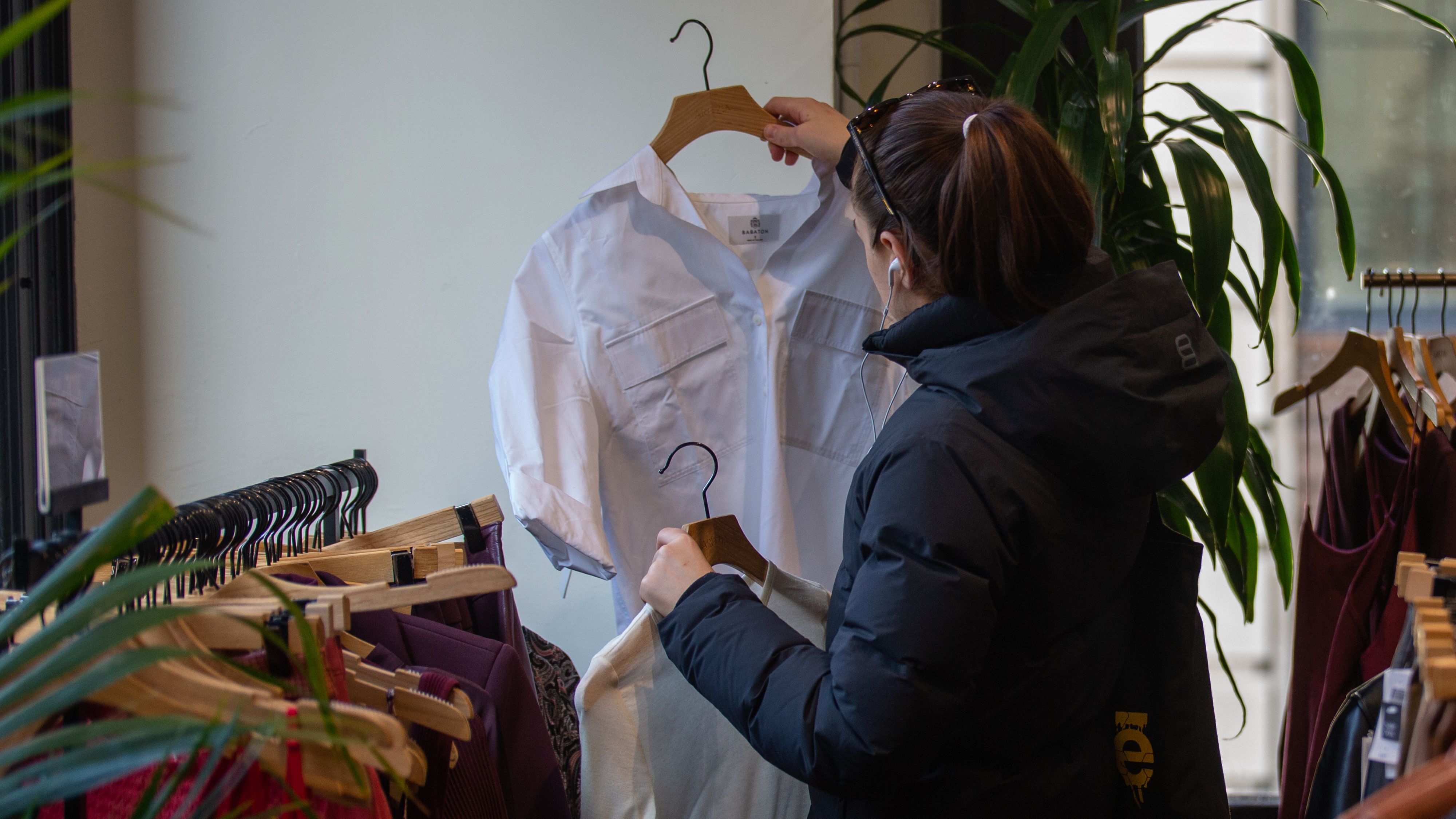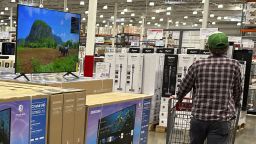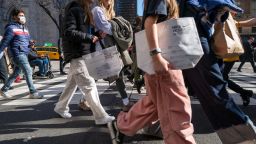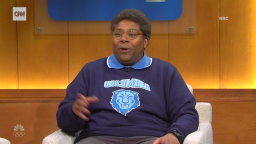Spending at US retailers tumbled much more than expected in January as cold weather across the United States kept shoppers at home after a robust holiday spending season.
Retail sales, which captures spending on all goods and food services, fell 0.8% in January, the Commerce Department reported Thursday, breaking a two-month streak of increases. That was even lower than the downwardly revised 0.4% increase in December, and well below economists’ expectations of a 0.1% decline, according to FactSet. The figures are adjusted for seasonal swings but not inflation.
Spending declined across various categories last month, including at gas stations and home improvement stores, likely due to the cold weather, falling 1.7% and 4.1%, respectively. Online sales contracted 0.8%.
Meanwhile, sales at restaurants and bars rose 0.7% in January.
Americans are being squeezed by elevated interest rates, still-high inflation and a harder time accessing credit, as many continue to draw down their pandemic savings, but one major bright spot is that the job market remains in decent shape. Robust earnings results from major technology companies have also powered gains in the stock market, helping boost some Americans’ wealth.
Despite Thursday’s worse-than-expected report, it’s only the second decline over the past 10 months. January’s Arctic chill also reversed course later in the month in some parts of the country and it’s possible that retail spending could come roaring back in February.
“This weakness typically reverses quickly as weather returns to normal and people catch up on spending plans delayed by the cold and snow,” Bill Adams, chief economist at Comerica Bank, said in a note Thursday.
“The Fed is likely to look through one month’s weak retail sales report, especially since there is an obvious explanation from a clearly temporary issue,” he said.
While there aren’t any glaring signs of a US recession for now, economists widely expect the economy to run at a slower pace in the coming months.
Companies say US consumers are under stress
Some major companies in the S&P 500 have said in recent earnings calls that it’s becoming increasingly clear that Americans are under stress, which could mean US consumers eventually curb their spending. Consumer spending accounts for about two-thirds of economic output.
“I think the state of our consumer is probably not as buoyant as perhaps some of what you read about consumers more generally,” Tim Wentworth, chief executive of Walgreens Boots Alliance, said on a recent earnings call.
Americans have also continued to support their spending through the use of traditional credit cards and “Buy Now, Pay Later” offerings, which are being utilized more often by people with low credit scores, according to New York Fed researchers. Borrowers will eventually have to pay down that debt.
“We have expected consumers to rein in their spending this year after drawing down the pandemic-related savings, driving the savings rate well below its pre-pandemic levels, and increasing their reliance on credit,” Kathy Bostjancic, chief economist at Nationwide, said in a note Thursday.
Aside from increasingly tapping in to credit, another typical dynamic when consumers are scrambling to support their spending is to trade down for better deals.
“They are looking at Costco and Walmart and other places to make key purchases to stretch their dollars still,” Wentworth said.
That’s because inflation remains well above the Federal Reserve’s 2% target — and anything that US consumers are used to.
“What has been important is to understand there’s a section of the population that has come under pressure from disposable income,” James Quincey, Coca-Cola chief executive, said in an earnings call. “The real spending power squeeze from the inflationary effect, and there we’re very much focused on affordability and you could perhaps argue that some of them went out less, there was more at home purchases, some of the certain channels and there we really focused with affordability, both from pack size — individual pack size and with multipack.”










